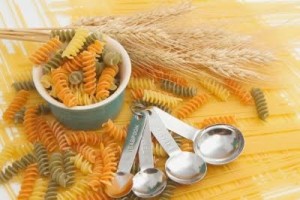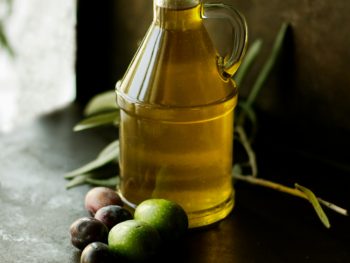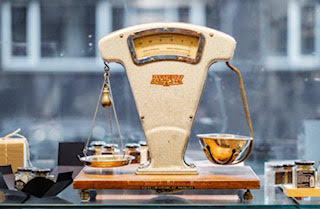As a portion size advocate, I believe all foods can fit into a healthy diet. However, while you can enjoy larger portions of certain foods (fruits and vegetables), you should pay attention to how big your portions are for others foods (breads, baked goods, red meat, candy and chips).
No one I know got fat from eating too many berries, apples, or carrots. Therefore, when I work with clients, I encourage them to enjoy generous portions of produce (fresh and frozen). However, we need to be more mindful of how much we eat of other foods, especially treats and sweets. It often takes retraining your brain, paying close attention to how much food really constitutes a health portion size, and developing healthy habits to avoid eating too much.
Being conscious of the following food traps is half the battle. Avoid these portion pitfalls to prevent you from overeating.
1. You buy oversize bags of chips in search of a bargain.
We all love a good bargain! After all, it is hard to resist buying the oversize bag of chips when it only costs just a quarter or so more than the smaller bag. And especially nowadays, as we limit trips to the grocery store during the COVID-19 pandemic, we tend to buy in bulk. However, while it’s great to stock up on paper goods, the same cannot be said about food, especially junk food. Keeping your health—and your weight—in check is a top priority and the best bargain you can find!
My suggestion: When buying jumbo bags of snack foods, take the time to portion out the contents into individual servings in small plastic baggies or containers
2. You ignore serving sizes on food labels.
While food labels recently got a makeover and some serving sizes of our favorite foods (ice cream!) have increased, most people look at the calories listed but pay little attention to the serving size and the number of servings per container.
While one serving of your favorite treat may contain only 100 calories, if you eat several serving’s worth, your calorie count will be much higher than just 100 calories. Yet so many of us would still say that they have only eaten 100 calories or so.
My suggestion: Pay attention to food label serving sizes along with the number of servings per container. I also suggest pulling out a measuring cup and food scale and from time to time weighing your typical portion to see how many servings are really on your plate.
3. You serve meals family style.
The best way to serve food whenever possible is to plate it in the kitchen. Placing large platters of food directly on the dinner table and serving food family-style is one of the easiest ways to end up eating lots more than you really need. And the larger the serving platter and serving utensil, the more food we are likely to take.
My suggestion: Plate out a reasonable size portion in the kitchen. If you are still hungry, you can always go back for more.
4. You eat out of the tub.
One of the easiest ways to overeat is to eat straight from the package. Whether it’s a tub of ice cream, a half-gallon of juice, or a bag of chips, it is very difficult to portion control your food when you eat straight from the package. And leaving it up to willpower rarely works.
My suggestion: Portion out a reasonable serving size, pour it onto a plate, savor it, and enjoy. And do eat sitting down.
5. You pour instead of dip.
One of the reasons so many of us eat more calories than we think is that we order a healthy salad but then we pour on tons of dressing. While salad greens and veggies won’t break you in the bank, salad dressing calories add up very quickly. One tablespoon of olive oil contains around 120 calories, and many salads—even appetizer sized!—contain several tablespoons worth.
My suggestion: Dip your fork into a side dish of dressing instead of pouring it all on your favorite salad. You can always add more if you need.





 Nutrition Q & A: YOUR questions answered
Nutrition Q & A: YOUR questions answered